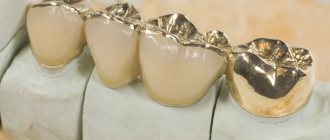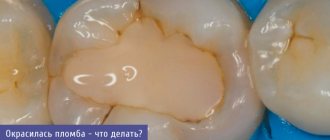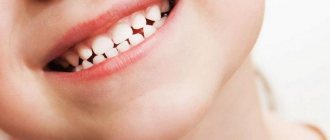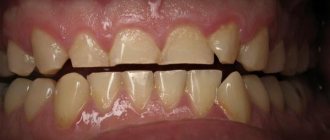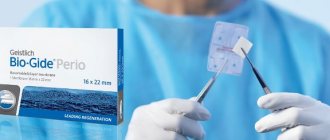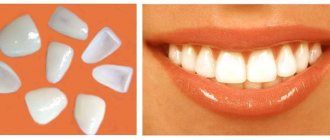Biorevitalization is a cosmetic procedure in which hyaluronic acid is injected under the skin using a syringe with a thin needle. The injection is performed in a papular manner, that is, with the formation of subcutaneous blisters. In the process of assimilation of the composition, they are absorbed without the need for any external influence.
Pain during contouring - myth or reality?
Thanks to unscrupulous players in the beauty market, potential clients have the impression that lip correction using fillers is a pleasant and painless procedure. But in reality this is absolutely not the case. Even the use of special anesthetic gels does not relieve pain. Subcutaneous manipulation with a needle is, to put it mildly, unpleasant, especially on such a sensitive area as the lips. Even those who have a fairly high pain threshold experience discomfort.
Manufacturers of lidocaine fillers claim that their solutions can reduce sensitivity by 35–40%. Cosmetologists also talk about positive experiences and slight swelling. But stories about serious complications that arise specifically from lidocaine-containing drugs are regularly covered in the media. Although we are mostly talking about overdoses or violations of sanitary standards.
An initial consultation with your doctor before the procedure is a wise thing to do. It is necessary to discuss with a specialist the selection of the drug, execution technique and contraindications. The doctor will take into account the individual characteristics of your body. This will help reduce the risk of side effects and eliminate allergic reactions.
Why do white dots appear on the lips?
Most often, small white formations, felt like lumps on palpation, appear in women after the lip augmentation procedure. And the reasons for this may be:
- incorrect injection of filler - the depth of injection is not maintained;
- violation of lip care rules after the procedure;
- allergic reaction to anesthetic drugs;
- reduced general immunity.
But there are other reasons why white dots appear on the lips:
- Fordyce granules. They can occur in both men and women; doctors assess them as microcystic formations localized in the sebaceous glands. They are formed against the background of excessive production of sebaceous secretions, which leads to blockage of the glands. They also appear due to hormonal imbalance, physiological characteristics of the body, and narrowing of the sebaceous ducts.
- Dysbacteriosis. Accompanied by diarrhea or constipation, which reduces overall immunity and promotes the accumulation of toxic substances. This is due to an imbalance of healthy and pathogenic microflora in the intestines.
- Avitaminosis. Small white dots also form when there is a lack of minerals and vitamins in the body. It can be triggered by an unbalanced diet, a strict diet, pregnancy and breastfeeding.
- Zhiroviki. Whitish spots (lipomas) appear under the skin; they are defined as soft, mobile in consistency, and belong to the category of benign neoplasms. They can form due to hormonal imbalance, problems with the functionality of the gastrointestinal tract, and the use of low-quality cosmetics.
- Herpes. It usually occurs on the upper lip, appears as a bubble, is accompanied by itching and swelling, and sometimes causes mild pain. This is an infectious disease that occurs when the immune system is weakened.
White dots on a child’s lips can form:
- with candidal stomatitis – the fungus of the genus Candida is activated and begins to actively multiply;
- due to herpes virus - transmitted from mother to baby during the birth canal and during breastfeeding;
- with allergic stomatitis - the body’s reaction to internal irritants (food, milk formula, purees), usually localized on the inside of the lip.
When such formations appear, consultation with specialists is necessary.
Unpleasant complications after contouring - swelling and hematomas
From a medical point of view, slight swelling on the lips where the needle was pricked is quite natural. Microtrauma is caused to the vessels, hence the swelling. But it is still worth minimizing possible complications. Use the services of only professional cosmetologists, and follow all doctor’s recommendations. If a lip contouring session has already been performed and the result is not entirely successful, do not delay and immediately seek help from specialists. Attempts at self-medication will only worsen the situation.
Severe swelling is one of the side effects of filler, which is based on hyaluronic acid . Such preparations quite actively sublimate water. This situation is not considered a complication; the swelling subsides within 8–10 days. There are exceptions, but in cases of introducing a large volume of gel. Contrary to popular belief, it is not always possible to get rid of swelling with lymphatic drainage massage. We recommend reading how to remove lip filler without harm to your health.
Ways to quickly eliminate papules
In order for the rehabilitation process to proceed as quickly as possible, it is prohibited:
- touch, comb, knead the bumps;
- sleep on your stomach, cover your head with a blanket;
- use decorative cosmetics;
- wash your face with tap water (in the first 2 days - only filtered water);
- go outside without UV protection cream, be exposed to the wind and frost for a long time;
- visit the pool, gym, sauna (for 2 weeks);
- smoke, drink alcohol.
Sometimes pharmaceutical ointments to relieve swelling and inflammation help reduce the duration of resorption of papules. Before using them, you should consult with a cosmetologist at the Bionics clinic. For 2-3 days you can apply a soothing mask.
Lip contouring: consequences in the form of inflammation
Inflammation cannot be called a direct side effect. Non-sulfated glycosaminoglycan (hyaluronic acid) is completely biologically compatible, but despite this, after its administration the body activates its standard protective reaction. As a rule, biological processes return to normal within a few days and inflammation goes away on its own. But in some cases, redness remains. There are two possible options:
- Along with the puncture, an infection entered the body . But this is not always the cosmetologist’s mistake. The viruses could have been developing for several days, and the injection triggered their launch.
- Autoimmune diseases reacted to the drug injected into the lip area, activating an inflammatory reaction and an increase in connective tissue.
In terms of neutralization, each of the points requires different therapy. In case of infection, you must make an appointment with a doctor to clarify the diagnosis and take pharmacological medications. If an autoimmune disease is to blame, then it is worth undergoing steroid therapy - it effectively reduces the immune response. But only a doctor prescribes the prescription and regimen for taking any medications. Self-medicating the consequences after contouring is extremely dangerous. Instead of reducing inflammation, you can, on the contrary, provoke suppuration and the formation of permanent scars.
Find out which method of correcting scars and stretch marks is optimal for you!
doctor Svetlana Viktorovna Ogorodnikova.
doctor
Reasons for the long resorption of papules
If the papules do not disappear within 10 days or increase with the formation of edema, you should consult a cosmetologist. This skin reaction is usually observed due to the following reasons:
- allergies to drug components or excipients;
- presence of contraindications to biorevitalization;
- connective tissue density in treatment areas;
- low quality of the drug or violation of its storage regime;
- ignoring the cosmetologist’s recommendations for aftercare;
- failure to maintain distance between injections;
- incorrect injections;
- violations of hygiene standards.
Fibrosis and compaction - complications after lip contouring
In the first days after the injection of fillers, lumps may appear at the injection site, this is due to the fact that the substance has not yet had time to distribute evenly. Sometimes it happens that a hematoma (bruise) appears due to damage to a vessel. Within a week, it usually resolves, but if the cause of the lump is fibrosis, then the situation is much more complicated and requires your close attention.
Why does fibrosis occur?
The distribution of fillers in the lip occurs gradually, and the effect can last up to 12 months. Immediately after administration of the drug and during the first week, balls are felt under the skin, which dissolve on their own. Clots are nothing more than drops of filler, which is quite natural. Fibrosis is an unpleasant complication when connective tissue grows with the appearance of scar changes.
One of the obvious reasons for the formation of fibrosis is the rejection of a foreign substance by the body . In this case, a well-chosen injection solution can solve this issue. But only a professional cosmetologist can determine the dosage and prescribe the necessary drug that will not aggravate the situation. The doctor will also tell you what care is suitable after lip contouring in your case.
Unobvious reasons for the formation of fibrosis include:
- inexperience of the cosmetologist;
- violation of sanitary norms and rules;
- mechanical damage to the walls of blood vessels;
- counterfeit or low-quality filler;
- violation of the technology and technique of drug administration;
- incorrectly selected dose of the administered substance.
Rehabilitation after lip contouring
Fibrous changes after filler injection can occur anywhere on the face, but a particularly favorite area for localization of compactions is the upper lip. This is due to the fact that the skin here is extremely sensitive, delicate and thin. Swelling may not even arise from the filler, but simply from trauma to the skin with a needle.
Seals on the lips cannot be corrected with makeup. Fibrosis is noticeable to the naked eye, and you won’t be able to hide lumps with lipstick and gloss; rather, on the contrary, you only focus attention on this area. It is possible to get rid of fibrosis in one of two ways: surgical or conservative. In the first case, surgical intervention will be required, and in the second, an external agent with collagenase enzymes. The operation is an extreme measure, which is usually used to extract biogel; most often, gentle methods can be used.
Relevance
Every year the popularity of such a branch of medicine as injection cosmetology is steadily increasing.
According to ASAPS (The American Society for Aesthetic Plastic Surgery), between 2014 and 2022 alone, the number of procedures using hyaluronic acid (HA) fillers increased by more than 58% [1]. The widespread use of such interventions makes it important for doctors to know not only about the benefits of a particular filler, but also about possible complications, side effects and methods for their correction. It is important to increase patient awareness of the potential risks associated with such injections. In modern literature, various reports of side effects after injection contouring are increasingly being published, most of which include hematomas, asymmetries, skin ischemia and necrosis, infections and allergic reactions [2].
Currently, various types of injectable fillers are used in cosmetological practice, which can be classified according to their origin (the most popular of them are HA in various modifications, calcium hydroxyapatite, poly-L-lactic acid, collagen) and the time of persistence in tissues (temporary, semi-permanent and constant) [3, 4].
Despite statements by manufacturers and various authors that HA fillers are as safe as possible in terms of immunogenicity or that the occurrence of such complications is extremely rare, side effects of this kind are still periodically observed. Systematic reviews have shown that all known HA-based fillers on the market are capable of causing early and late side effects. Their true prevalence is unknown but appears to be significant. The nature of most late side effects is inflammatory and immune-mediated. The most common occurrences are edema, granulomas, carcinophobic disorders and cellulite. Autoimmune reactions and immediate hypersensitivity are more rare [5].
In recent years, there has been great interest in studies of cases of delayed and persistent inflammatory reactions that occur after the administration of various excipients. According to some authors, infectious diseases [6], trauma [7], and vaccination [8] can be trigger factors.
Currently, the role of biofilm formation at the injection sites of fillers is being actively studied, because More and more researchers suggest that many cases of delayed complications arise due to its formation, and not due to the development of allergic reactions or other inflammatory response [9, 10].
Biofilms are a collection of microorganisms whose cells form three-dimensional structures by adhering to each other or to various surfaces. These microorganisms are capable of forming a matrix of extracellular polymeric substances (carbohydrates) around their colonies, which complicates the bioavailability of antibiotics and forms local resistance to them. There are five stages of biofilm formation: initial attachment, irreversible attachment, maturation I, maturation II, and dispersal. It is in the dispersion phase that the biofilm most actively forms its protective barrier.
After their formation, biofilms remain dormant (low-grade infection), but their activation with the occurrence of inflammatory reactions can be caused by trauma, hematogenous infection or iatrogenic manipulations [11].
Identification of biofilms is difficult. Cultures from biofilm-infected tissue are usually negative. Some authors consider fluorescence hybridization using peptide nucleic acid to be the most accurate in situ method [12].
Although HA-based fillers belong to the class of non-permanent fillers, a number of them are able to persist in tissues for 6 to 36 months [13], which provides bacteria with enough time to organize into biofilms.
As a clear illustration of the delayed immunoinflammatory response to the injection of HA filler, we present the following clinical case.
Clinical example
Patient N., 45 years old. She contacted the Department of Dermatology and Cosmetology of the JSC Institute of Plastic Surgery and Cosmetology with complaints of periodic swelling of the middle third of the face and pain in the area of the nasolacrimal groove and cheeks, pronounced pigmentation in the periorbital area after the injection of HA filler (Fig. 1).
From the anamnesis (according to the patient): about 1.5 years ago, 1 ml of HA filler was injected into the area of both nasolacrimal grooves and nasolabial folds. After the procedure, satisfactory correction was noted. 6 months after the injection of fillers, the patient suffered from severe infectious mononucleosis (she was hospitalized with meningitis). During hospitalization, she first noted the sudden appearance and intensification of swelling, pain, redness and hardness in the area of the nasolacrimal grooves and cheeks. The swelling increased during the day (Fig. 2).
In connection with this, an emergency consultation with a maxillofacial surgeon was carried out and a diagnosis of T78.3 (angioedema) was made. After drips with prednisone (three times), the patient noted an improvement. The swelling has decreased significantly.
After being discharged from the hospital a month later, the patient again noted swelling, pain, redness and hardness in the area of the nasolacrimal grooves and cheeks. She also began to notice the appearance and increase of diffuse symmetrical pigmentation in the periorbital area. The patient independently prescribed a course of antibiotic therapy, which she completed without effect. She also independently administered a single intramuscular injection of prednisolone (90 mg). After which she noted a significant decrease in symptoms.
Having associated her condition with filler injections, the patient turned to a doctor who had previously injected filler for its enzymatic resorption. After which, within six months, the negative symptoms resolved and were no longer observed.
Six months ago, the patient again turned to a cosmetologist to correct problem areas (nasolacrimal groove, cheeks, nasolabial folds).
The same filler used earlier was reinjected. After which, within 3 days, swelling, pain, and redness reappeared in the treated areas. When contacting a cosmetologist, intramuscular injection of dexamethasone and enzymatic resorption of the filler with hyaluronidase (one-time) were performed. A month later, the patient again noted the occurrence of periodic facial swelling in the area of filler injection, which was relieved by intramuscular administration of dexamethasone.
Objectively: at the time of examination there is no swelling of the face; painful lumps in the area of the nasolacrimal grooves (mainly on the right), the medial part of the cheeks and nasolabial folds are palpated. There is pronounced pigmentation of the periorbital and buccal area.
According to ultrasound examination, in the projection of the nasolacrimal grooves and nasolabial folds, residual inclusions of the drug are determined, which according to the ultrasound picture are characteristic of HA-based fillers. There is a local area of infiltrative changes (without a pronounced increase in blood flow) in the subcutaneous fatty tissue of the nasolacrimal groove on the right.
Diagnosis: L08.9 – Local infection of the skin and subcutaneous tissue, unspecified.
Treatment: amoxicillin + clavulanic acid 875 mg/125 mg once a day for 12 days; dexamethasone orally 1 mg/day for 20 days with a gradual reduction in dosage.
In the first 5 days of treatment, while taking the main medications, daily physiotherapy was carried out, consisting of the following sequence of procedures: ultrasound with dexamethasone, then pharmacophoresis with Longidase. Over the next 7 days, against the background of continued antibiotic therapy, enzymatic resorption of filler residues was carried out with hyaluronidase at a dilution of 3000 IU per 4 ml, using the technique of multiple injections and wide infiltration not only with the treatment of key areas, but also with the capture of surrounding intact areas (twice with an interval of 3 days) .
At the end of the course of treatment, a control ultrasound was performed, which revealed no signs of inflammation or residual filler fragments.
During therapy, a complete reduction of all the above-described clinical symptoms was noted. By the end of the course of therapy, there was a pronounced lightening of the pigmentation foci (Fig. 3).
Discussion
Potentially, any biomaterial injected and in contact with blood can sooner or later cause a wide range of side effects, both local and systemic. To date, there is not enough research and clinical experience regarding the treatment of these conditions. Management of both acute and systemic reactions is often difficult and requires an integrated approach using anti-inflammatory and sometimes immunosuppressive therapy. This problem requires further observations, development of diagnostic criteria and sound therapeutic protocols.
Conclusion
This clinical case is of potential interest for cosmetologists, dermatologists, plastic surgeons, and physiotherapists as an example of diagnosis, prevention and treatment of such pathological conditions.
Correction of complications
To avoid complications, never try to eliminate side effects after cosmetic procedures on your own. Only a specialist can correct negative consequences. At the same time, it is important that he has sufficient qualifications and experience, because your health and beauty depend on this.
Our clinic has a specialized department for dealing with complications after cosmetic procedures. The consultations are conducted by the best doctors of the clinic with many years of experience.
Seals in the lips after correction: normal options
If dense balls appear in some cases, do not panic:
- a dense filler was used : even when the gel is injected to the correct depth and in the required quantity, lumps will be felt inside the lips for some time, and then they will disappear;
- Little time has passed since the procedure : the gels dissolve in the tissues quite slowly. You can speed up this process with the help of a special massage. But it is strictly forbidden to knead the seals yourself - this must be done by the doctor who performed the injections.
To determine whether you should worry, you need to answer a number of questions:
- Are gel accumulations visible under the skin?
- Is there deformation of certain areas of the lips due to displacement of the gel?
- Is there lip asymmetry that was not there before?
- When examined, are there white balls on the mucous membranes after a few days?
If the answer is positive to at least one of the questions, then you need to schedule a visit to a cosmetologist in the near future. The decision to prescribe any procedures is made only by a specialist based on examination.
How to minimize the risk of complications?
The first thing you need to do is choose a clinic with a good reputation, a professional cosmetologist, read reviews about his work and study photos of examples of correction. The following recommendations will help you avoid mistakes:
- During the consultation, voice your wishes . The cosmetologist must have a clear idea of what results you want to achieve;
- Let the doctor choose the filler on his own, but ask him to explain to you exactly what is included in it and how it works . At the same time, you must be shown the integrity of the packaging, manufacturer, shelf life and other important information;
- You should definitely discuss options for lip pain relief during injections . Despite the fact that the injections are made with thin needles, the pain will be quite strong. You can make the procedure comfortable by using fillers, which include anesthetics, application or infiltration anesthesia;
- specify in what volumes the cosmetologist plans to inject filler into the lips . Simultaneous injection of a large amount of hyaluronic acid will lead to tissue stretching, which will be very difficult to eliminate.
In some cases, the doctor may refuse to perform the procedure due to detected contraindications. If he considers obvious problems to be unimportant, then perhaps it is worth changing the specialist.
Benefits of Hyaluronic Acid Fillers
Once injected, the gel in the filler supports and shapes the lip tissue.
The benefits of using hyaluronic acid fillers include:
- Control of lip volume. The amount of substance injected can be controlled so that the doctor can better control the volume of the lips.
- Gradual pace of treatment. The injections can be given gradually over different appointments until the desired results are achieved.
- Irregularities are easily dissolved. Any lumps or lumps created by moving your lips will easily dissolve.
- Less bruising. There may be less bruising and swelling compared to other dermal fillers.
- Quite stable results. The results are quite long lasting, but not permanent.
- An allergic reaction is unlikely. Because hyaluronic acid fillers are made from substances similar to those found in the body, they are unlikely to cause an allergic reaction. But if you are allergic to lidocaine, tell your doctor before treatment.

